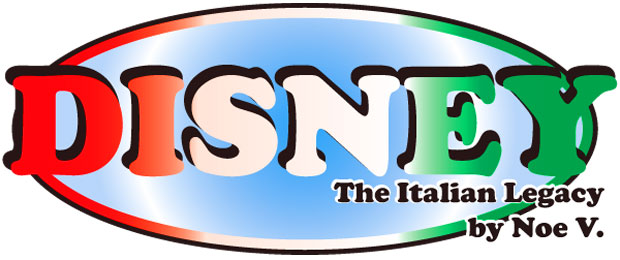
When Epic Mickey was under development Disney in the USA used it as a vehicle to reach out to the community. They wanted to remind younger audiences why Mickey Mouse was an icon. The studio wanted to show them why the mouse had international appeal, even decades after his introduction. The concepts of selflessness, friendship and loyalty that made Mickey famous had to be made clear. In order to reach the younger generations the studio had to tap into their primary forms of entertainment, videogaming was the obvious one, yet comic books were also a contemporary form of entertainment that the studio could use as well.
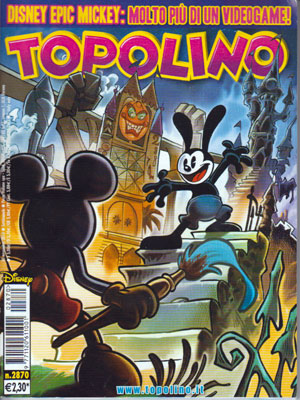
While Warren Spector penned the outline for the Epic Mickey game, fellow Disney fan, comic book veteran and Eisner Award Winner Peter David was hired to write the story in comic book form. These were set to be a series of adventures that took place before the videogame, titled “Tales from the Wasteland.” In the US the comics were distributed digitally using the Disney DigiComics service, available via the iTunes store. Those with an iPhone, iPod or iPad could download the comics for free. The actual collected stories would not appear in graphic novel format until almost year later.
The decision to distribute comics digitally did not make a lot of sense to comic or videogame fans. Perhaps the studio did not want to have the stories get lumped together with the children’s comics in stores. By going all digital they ensured that part of the target audience would have direct access to the story without having to hunt for issues.
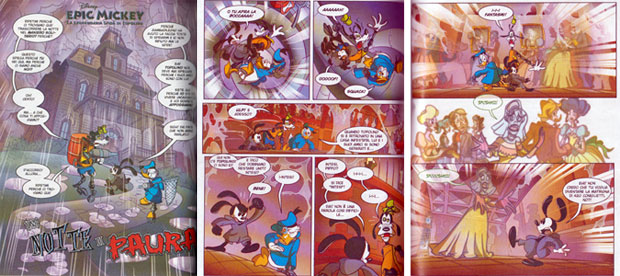
At the same time the stories were made available digitally they were published physically overseas in the pages of Topolino.
In keeping with Topolino magazine tradition there was a multi-page blowout about the game, plot and interviews with Warren Spector. Epic Mickey concept art, characters and history were featured before audiences got a chance to read the first in a series of adventures.
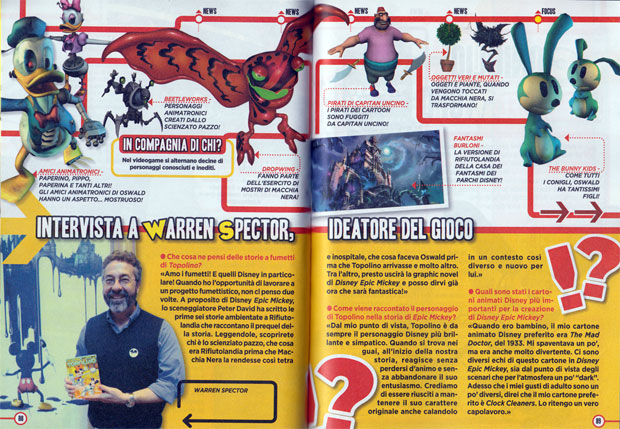
In order for Disney to accomplish their goal of reaching audiences via the comic book medium the best option was to go to Italy. Very few comic book artists working in the USA were trained in the Disney style or had any experience drawing Disney Comics. Italy was the one place where Disney comics were being published regularly and developed with a strong attention to detail.
Peter David got most of the attention in the US media outlets yet the art staff was just as accomplished. Fabio Celoni and Paolo Mottura were veterans from the pages of Topolino. They trained with the Disney Academy and had experience drawing just about every character in the universe at one point or another through their careers Their styles were not quite classic but more of a modern cartoon style instead. They helped bring Epic Mickey to life for fans on both sides of the Atlantic. The stories laid out by Mr. David were fun and took many chances to call out the classic attractions that would be highlighted in Epic Mickey. He was able to incorporate the most memorable elements that visitors saw at each attraction. For example the ballroom scene and bride from the Haunted Mansion were incorporated into the story.
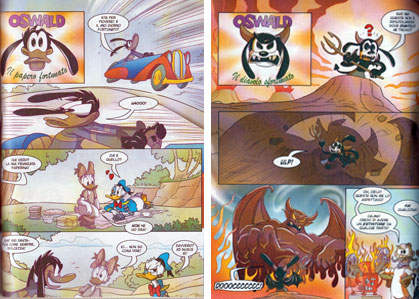
The lovelorn bride chased Oswald and the mechanized Donald and Goofy around the inside of the mansion as well as through the graveyard on floating “Doom Buggies.” Fabio and Paolo did a great job making cartoon versions out of the classic Marc Davis designs. Although they were ghosts none were too macabre as to scare off younger readers. Mr. David also wrote in Oswald trying to fill in the shoes of other classic characters. Instead of Donald Duck they tried out Oswald the Lucky Duck. Instead of Chernabog, the large demon at the end of Fantasia, Oswald tried his best at being menacing. Neither roles really worked for the rabbit. The classic squash and stretch reactions rendered by the art team did work in his favor though.
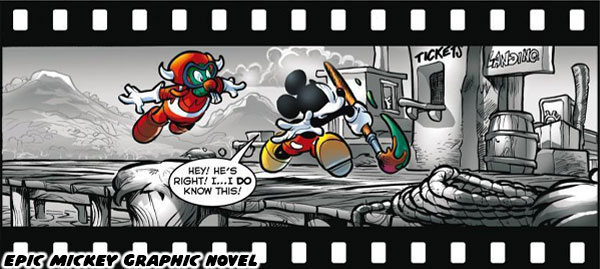
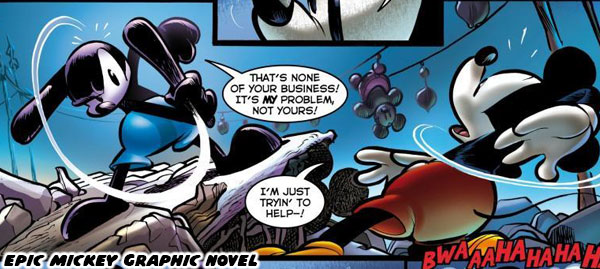

No comments:
Post a Comment